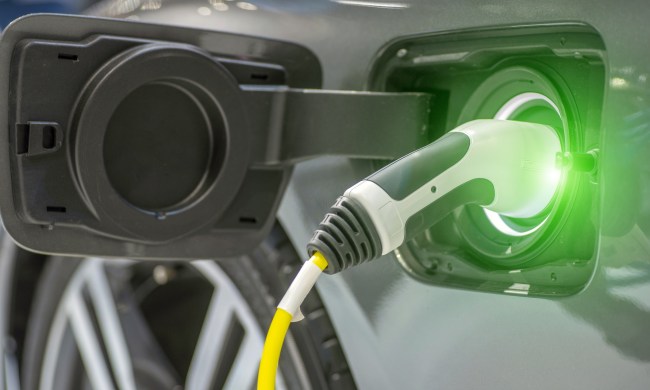While the number of EV charging stations continues to grow, finding a station and paying for charging can still be a hassle. But soon you’ll be able to simply ask Alexa.
At CES 2023, Amazon announced Alexa-enabled charging services that will let EV drivers find a charging station via Alexa, as well as pay for charging at certain stations when they become available to drivers in the U.S. later in 2023. You’ll need a car with Alexa integration or an accessory like one of Amazon’s Echo Auto devices, however.
By saying “Alexa, find an EV charging station near me,” drivers will get a list of nearby locations on their vehicle screens, with availability by plug type and time and distance to arrival. Drivers can then select a station and ask Alexa to navigate to it.
Alexa’s database includes more than 150,000 public charging stations across the U.S. on multiple networks, but if drivers select a station on the EVgo network, they can also pay for charging via Alexa. This does require an EVgo account and preset payment method, but everything is done through the Alexa app, using the voice command “Alexa, pay for my charge.”
Alexa-enabled payment isn’t available with other larger charging networks, like Electrify America or the Tesla Supercharger network, for now, but drivers should still get plenty of use out of this feature. EVgo claims to have over 850 fast-charging locations covering over 60 metropolitan areas in 30 states.
Amazon isn’t the first to attempt a more streamlined EV charging experience. Tesla drivers can already find Supercharger stations with minimal hassle, although things can get more complicated when they look beyond the company-owned network. Several other automakers have begun offering charging-station locators for their EVs, or have signed on to Plug and Charge, which lets drivers start a charging session simply by plugging in a compatible vehicle. Alexa does at least add EV charging to an app people are already using for other things, rather than keeping it as a standalone function.
EV charging is still fairly inconvenient compared to pumping gas. Charging stations can be hard to find, and their touchscreen interfaces often aren’t as intuitive as gas pumps. Solutions like Alexa integration can help, but only if they’re broadly adopted. You don’t need a certain car or app to use a specific gas pump, but that is currently the case in the fractured world of EV charging services.


